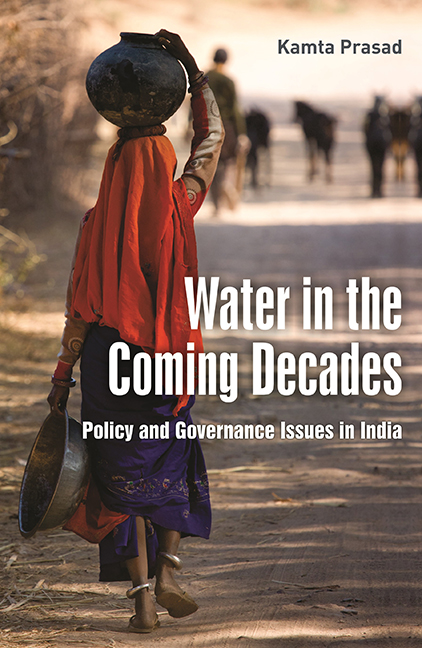Book contents
- Frontmatter
- Dedication
- Contents
- List of Tables
- List of Abbreviations
- Preface
- Acknowledgements
- Section I Overall Perspectives
- Section II Situational Analysis
- Section III Socio-economic, Institutional and Environmental Aspects
- Section IV Technological Options
- Section V Concluding Observations
- References
- Index
9 - Flood-prone Areas and Policies for their Development
Published online by Cambridge University Press: 13 July 2022
- Frontmatter
- Dedication
- Contents
- List of Tables
- List of Abbreviations
- Preface
- Acknowledgements
- Section I Overall Perspectives
- Section II Situational Analysis
- Section III Socio-economic, Institutional and Environmental Aspects
- Section IV Technological Options
- Section V Concluding Observations
- References
- Index
Summary
This chapter is concerned with flood-related issues, which are an important aspect of water resources in India. The chapter throws light on flood-prone areas and their characteristics. It analyses nature, causes, incidence and effects of floods in India, makes a critical review of flood management measures advocated and adopted in the country and develops a strategy for the areas which would continue to remain flood-prone in future also. The chapter utilizes information emanating mostly from the Central Water Commission (CWC), which, in turn, collects it from the states. This is supplemented by primary data collected by the author during a study on Community Approach to Flood Management in India, conducted by him in flood-prone areas of Assam, Bihar and West Bengal, the three most severe flood-prone states of India. This study was sponsored by the World Meteorological Organization (WMO), Geneva (Switzerland).
Flood-prone areas
Flood-prone areas constitute a significant land mass in India. These had been estimated to be 40 mha by the Rashtriya Barh Ayog (RBA) in 1980. Based on additional information available since then, these are currently estimated to be 49.815 mha). This is about 27 per cent of the total cultivable land. The percentage is still higher in terms of population inhabiting such areas because of the higher density as indicated by the subsequently given figures. Notwithstanding the media reports for a few days in a year on upheavals and losses due to severe floods in specific locations, these areas fail to get adequate national attention, including that in the professional and academic circles also. It is presumably because of the limited duration during which floods occur as well as their concentration in one part (i.e. eastern) of the country. Little attention has been drawn to the fact that flood-prone areas come under the category of the poverty‑stricken areas in India and that occurrence of floods is a major reason for persistence of their chronic poverty. Further, it is the poor who are more affected by floods, since they have traditionally been forced to inhabit low-lying areas, which suffer the most due to floods. In addition, their houses are made of mud, which tends to collapse when floods hit them.
- Type
- Chapter
- Information
- Publisher: Foundation BooksPrint publication year: 2014



